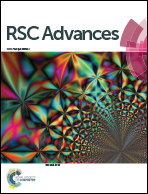Stability of carbon and nitrogen isotopic compositions of the protein extracted from milk and their potential as “fingerprints” of geographical origin
Abstract
The present work aimed to determine whether isotopic compositions can be used as “fingerprints” in identifying the geographical origin of milk. For this purpose, δ13C and δ15N values of the proteins extracted from fifty-six Tetra Pak milk samples originating from four continents, including Australia (with New Zealand), Europe (Germany and France), North America (the United States) and Asia (China), were determined using elemental analyzer-isotope ratio mass spectrometry (EA-IRMS). The effects of storage time and temperature on the δ13C and δ15N values were also studied in order to evaluate the stability of the isotopic composition and hence the ability of the developed EA-IRMS method to identify the geographical origin of milk. The results indicated that there were no significant differences (P > 0.05) for δ13C and δ15N values for the samples stored under different conditions, demonstrating the stability of the isotopic compositions in the proteins extracted from these milk samples. The δ13C values of these extracted proteins ranged from −29.36‰ to −15.02‰. Their mean δ15N values were calculated to be between 4.55‰ and 5.80‰, with the highest, second-highest, third-highest, and lowest values for the samples from Australia (with New Zealand), Europe, America, and Asia, respectively. Significant differences (P < 0.05) were found in the δ13C and δ15N values between these four regions, verifying their potential as “fingerprints” of the geographical origin of milk. The results obtained confirm the suitability and potential of stable isotopic composition (δ13C and δ15N) analysis in determining the geographical origin of milk.



 Please wait while we load your content...
Please wait while we load your content...